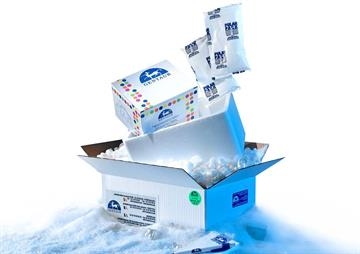Recombinant Mouse CXCL16 Protein, His Tag

Recombinant Mouse CXCL16 Protein, His Tag
892.5 €
In Stock
quantity
product details
Catalog number: 426 - E40KMP1697
Product Category: Business & Industrial > Science & Laboratory
EnoGeneGentaur
Size: 20ug
Related Products
80R-3350
CXCL16 protein (Mouse) (His tag)
Purified recombinant CXCL16 protein (Mouse) (His tag)
1099.5 €
M10-056
Mouse CXCL16 Recombinant Protein
CXCL16 is a member of the CXC chemokine family and signals through the CXCR6 receptor. CXCL16 may play a role in attracting lymphocyte subsets during inflammation and may facilitate certain immune responses. The chemokine domain of CXCL16 contains six cysteine residues including the four highly conserved cysteine residues characteristic of CXC chemokines. The CXCL16 gene codes for a 273 amino acid polypeptide, which includes a 29 amino acid cytoplasmic domain and transmembrane sequence containing approximately 20 amino acids. The extracellular portion of CXCL16 contains a chemokines domain and an extended C-terminal mucin-like stalk sequence. The extracellular domain contains 89 amino acid residues (86 a.a. residues for the murine homolog). Recombinant murine CXCL16 is a 9.9 kDa protein containing 88 amino acid residues.
444.52 €
M10-056S
Mouse CXCL16 Recombinant Protein
CXCL16 is a member of the CXC chemokine family and signals through the CXCR6 receptor. CXCL16 may play a role in attracting lymphocyte subsets during inflammation and may facilitate certain immune responses. The chemokine domain of CXCL16 contains six cysteine residues including the four highly conserved cysteine residues characteristic of CXC chemokines. The CXCL16 gene codes for a 273 amino acid polypeptide, which includes a 29 amino acid cytoplasmic domain and transmembrane sequence containing approximately 20 amino acids. The extracellular portion of CXCL16 contains a chemokines domain and an extended C-terminal mucin-like stalk sequence. The extracellular domain contains 89 amino acid residues (86 a.a. residues for the murine homolog). Recombinant murine CXCL16 is a 9.9 kDa protein containing 88 amino acid residues.
438.6 €
CD00495-5ug
Recombinant Mouse CXCL16 protein
CXCL16 is a member of the CXC chemokine family. Larger than other chemokines, it is one of the only two transmembrane chemokines in the family and the other is CX3CL1. Mouse CXCL16 has 246 a.a. and consists of a 26 a.a. residue putative signal peptide, an 88 a.a. residue chemokine domain, an 87 a.a. residue mucin-like spacer region, a 22 a.a. residue transmembrane domain, and a 23 a.a. residue cytoplasmic tail. Mouse CXCL16 shares 70 % sequence identity with human CXCL16 in chemokine domain. CXCL16 interacts with the chemokine receptor CXCR6, also known as Bonzo. Expression of CXCL16 is induced by the inflammatory cytokines IFN-gamma and TNF-alpha. Functions of CXCL16 include inducing a strong chemotactic response and calcium mobilization. CXCL16 also acts as a scavenger receptor on macrophages, which specifically binds to OxLDL (oxidized low density lipoprotein), suggesting that it may be involved in pathophysiology such as atherogenesis.









